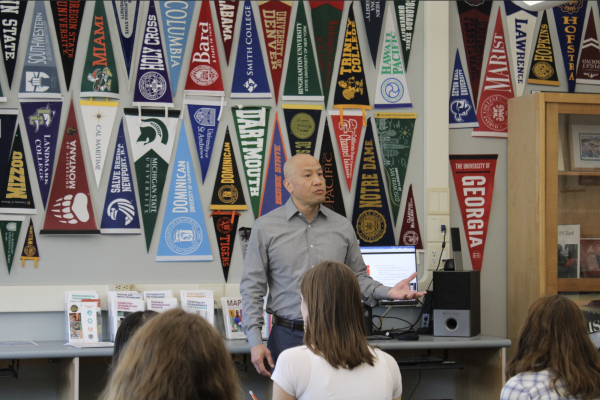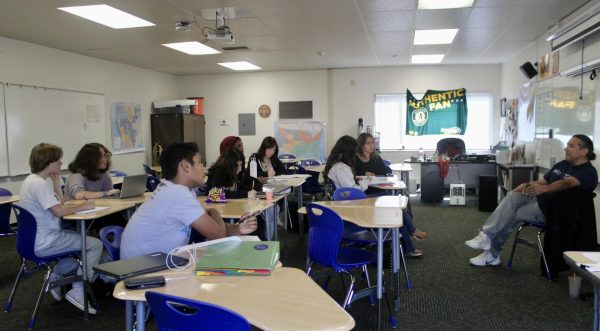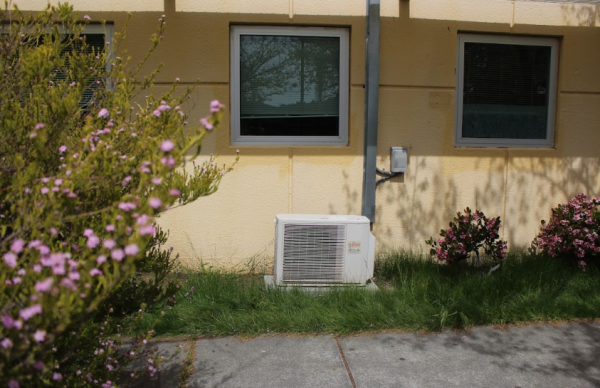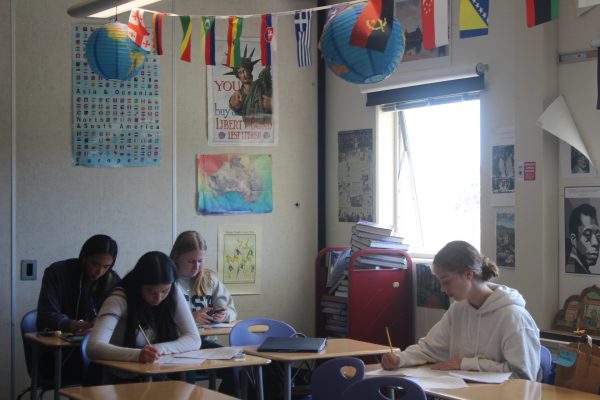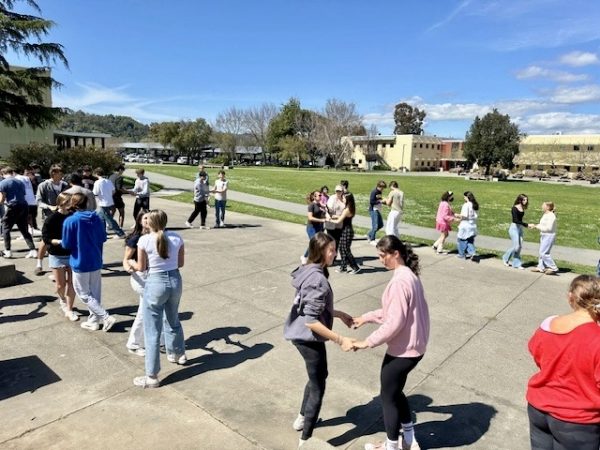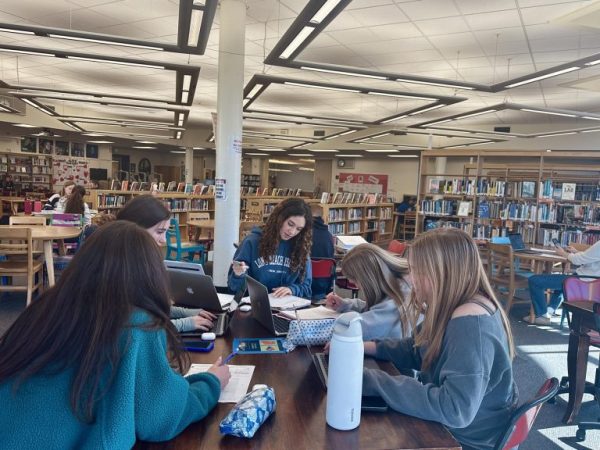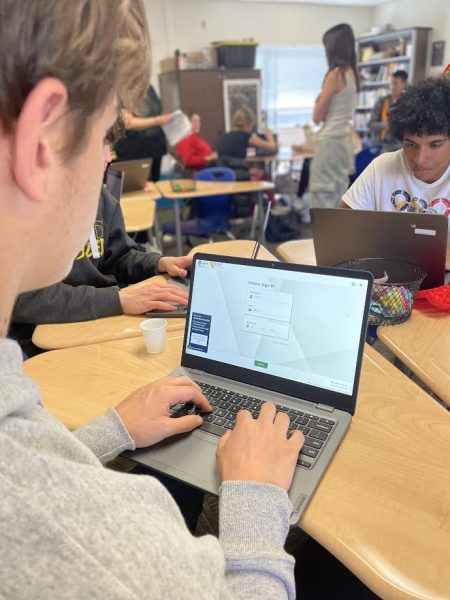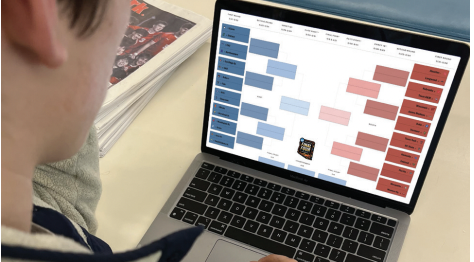Single-block schedule finalized after close vote
April 29, 2018
On Friday, April 27, decisions regarding the bell schedule for the next two years concluded as teachers voted to keep the single-block schedule as opposed to switching to a double-block.
Out of the 105 certified union members eligible to vote, 66 voted for the double-block schedule, just four votes short of the two-thirds majority required to pass. Once the double-block schedule was voted against, 100 out of 105 votes supported a single-block schedule as opposed to a schedule with seven-period days, five days a week. As a result, Redwood will continue to follow a single-block schedule for the 2018-19 and 2019-2020 academic years.
According to an email sent on Friday by Principal David Sondheim to parents and students, the single-block schedule that passed is similar to the current schedule with the addition of seven-minute passing periods instead of five-minute passing periods, as well as the removal of Advisory.
The vote was organized by the Bell Schedule Committee, comprised of teachers who volunteered to represent their departments to vet schedule options.
According to English teacher leader Cathy Flores, who facilitated the committee, Sondheim asked teachers during December of last year to suggest bell schedule recommendations to be considered for voting in April. After receiving approximately 32 schedules, the committee began the vetting process to whittle down the options for the vote.
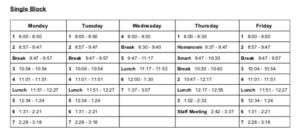
“We needed to make sure the schedules lined up with the amount of instructional minutes that we’re required to have, that they fit within the parameters of the teacher contract,” Flores said.
Flores stated that the committee sent out a survey to teachers to gather data on teacher opinions regarding factors such as single or double-block preference, lengths of passing periods and classes, dismissal time and staff meeting times. Using the results of the survey, they modified proposed schedules to fit what the data suggested.
“It suggested that a group of teachers felt strongly about having a single block, maintaining what we had, and a group of teachers were in favor of a double block and a third group was [in favor of] a blend of the two,” Flores said.
The committee also assessed factors that would be conducive to student needs and learning styles when modifying the schedules, according to Flores.
A week before the final vote, Sondheim sent a survey to parents and students as well to gather their schedule preferences. According to Sondheim, the parent and student survey indicated that 70 percent of students and parents preferred the double-block. Flores stated that teachers considered this data before voting, although majority of teachers voted against the double-block despite higher parent and student support for it.
According to Flores, a non-negotiable component of all new schedules was to have seven-minute passing periods as opposed to five to account for the longer time required for the many students walking from the portable classrooms to their classes in the main buildings.
Flores said that close to 1000 students will take classes in the portables next year as a result of the addition of new portables to accommodate the growing student population.
At the end of the logistical process, the final ballot was created and included two components: first, teachers had to vote “yes” or “no” to whether they supported the double-block schedule, and second, whether they would prefer a single-block schedule or a schedule with all seven-period days, if the double-block were to not pass.
Sophomore Olivia Raskin said she was relieved by the result of the vote. In January, Raskin created a petition to prevent the passage of the double-block schedule, which yielded 345 signatures from students and parents.
“The main reason I was against the double-block schedule was that it didn’t seem fair to make kids sit through class for such a long time because a lot of kids have trouble focusing, whether it’s because they just have trouble focusing or they have some sort of a learning disability,” Raskin said. “If we are changing the schedule, it should be to help the students who are already struggling academically.”
Flores, however, who previously taught at Tam under a double-block schedule, said that despite initial apprehension, she began to adapt to the double-block schedule. She said that learning to be flexible with her time and lesson plans helped her have a positive experience.
“I remember being incredibly fearful of the double-block because I didn’t know how to put lesson plans together that adhered to the schedule. However, once I went into it and I started planning and modifying my lessons, I absolutely loved it,” Flores said. “I had more time doing more depth versus breadth type teaching and kids were getting into things and I could offer more assistance.”
Despite the contention between supporters and critics of the double and single-block schedules, Flores believes that a bell schedule does not hold much influence over a student’s learning.
“What actually causes change for a student and helps them grow as a learner is the instruction that happens in the classroom by a teacher. That’s what changes student learning,” Flores said. “What changes kids that are not performing at the same level as their peers is having a teacher in the room that is addressing their learning needs in a very specific, intentional way. Not a bell schedule that’s double or single.”
According to Sondheim’s email, further information on next year’s daily bell schedules, minimum days, rally days and assembly days will be sent out soon.








